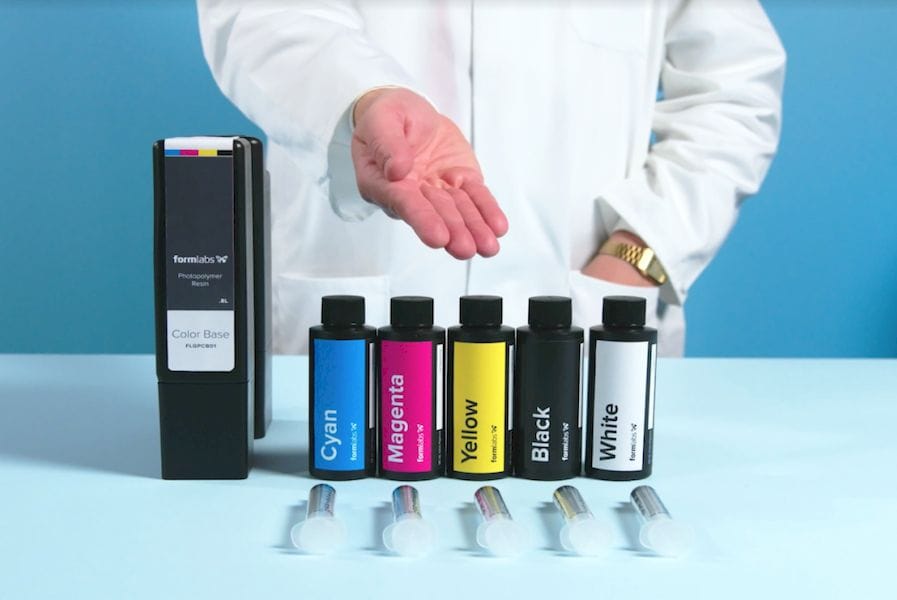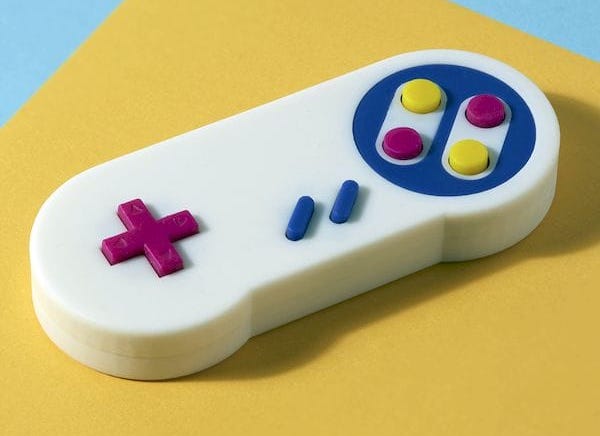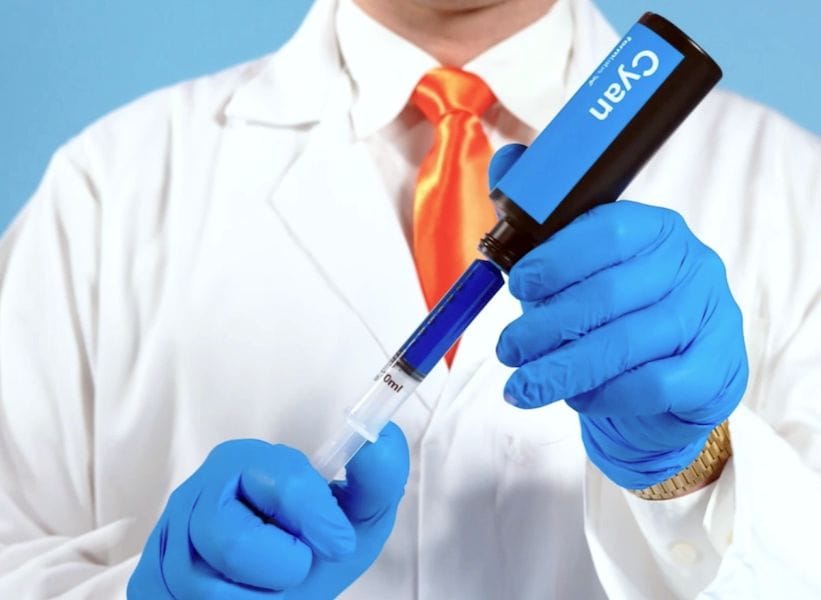
Formlabs announced a new “color kit” for their equipment.
The company has marketed resin-based desktop 3D printers for years now, but until recently had a rather limited selection of resins. At the beginning they had only a standard utility resin available in grey and clear colors.
Times have changed; Formlabs now offers a wide variety of functional resins ranging from flexible, to “tough” to medical quality products. They also offer a specialized “Form X” program in which operators can disable the normal controlled resin environment on the Form 2 to enable the use of any resin you’d like to try. But if you do, you’re on your own for finding the best print settings.
The standard set of Form 2 resins come in specific colors, mainly to easily recognize which ones are which. The tough resin, for example, is a translucent green, while the flexible material is dark. This makes it more straightforward for the 3D printer operator to ensure the correct resin is loaded and reduce mistakes.
But that does constrain some applications. In some cases, you’re looking for more than just the functionality of the part and require it to appear visually appropriate. Formlabs explains it quite well:
Color helps us understand the world around us. Color can indicate which parts of a product to touch or use, direct our eyes, create contrast or cohesion, and connect a product to a particular brand family. Color can elicit emotion and shift interpretations.

Up to now, that means the print must be painted after printing, unless the standard gray (or whichever standard Formlabs color applies) is what you required.
That painting is a labor intensive act and thus can add to the cost of printing if needed.
To counteract this effect, Formlabs has introduced “Color Kit”. It is a set of pigments and instructions that can be used to add very specific colors to a “base resin”.
That’s how it works. The Color Kit comes with a standard resin that produces matte, high resolution parts that require specific coloration. You must remember that this appears to be a basic material, not a “tough”, “flexible” or other speciality resin that remain only in the original factory colors.
So if you need a not-necessarily functional prototype in a particular color, this might be the way to go.
Usage is straightforward, but must be done carefully. The kit includes five pigments: C, Y, M, K, as you might expect, and W (White). To obtain a specific color, you simply mix a very specific ratio of these pigments into the base resin. Shake vigorously! Then the resin is ready for installation on a Form 2.

So far Formlabs has tested sixteen specific colors and will provide their “recipes”. However, there’s nothing stopping you from experimenting with your own color conceptions. Just remember that you probably will need a new jug of base resin for each experiment. You’ll also have to use the resulting resin using the Form X experimental mode.
Formlabs has smartly organized the product into independently purchasable pieces:
- Color base resin, 800ml: USD$119
- Pigment bottles, 115ml: USD$19
- Color Kit (1 resin, 5 pigments): USD$175
Why isn’t the resin a full 1000ml (1L)? It’s because when you mix the pigments in, you will grow the volume somewhat. They left enough volume to account not only for the pigment, but also a bit of space for you to shake up the cartridge to mix it after application of the pigments. They say the result is typically around 900ml, but can vary depending on your color mix.
Why do this at all? Formlabs explains there are reasons to consider pigmentation versus painting:
Painting is the best option if:
- Requirement for one-off models in many different solid colors
- Requirement for multicolored parts, custom finish, added texture
- Availability of post-processing labor
- Parts do not need to withstand wear and tear
Whereas pigmentation using the Color Kit is best if:
- Requirement for many models in the same solid color
- Requirement for solid colored parts with a matte finish
- Low cost parts straight from the printer
- Need to withstand wear and tear that painted parts cannot
Like every 3D print feature, this is yet another tool you may consider when solving manufacturing challenges.
Via Formlabs


1 comment
Comments are closed.